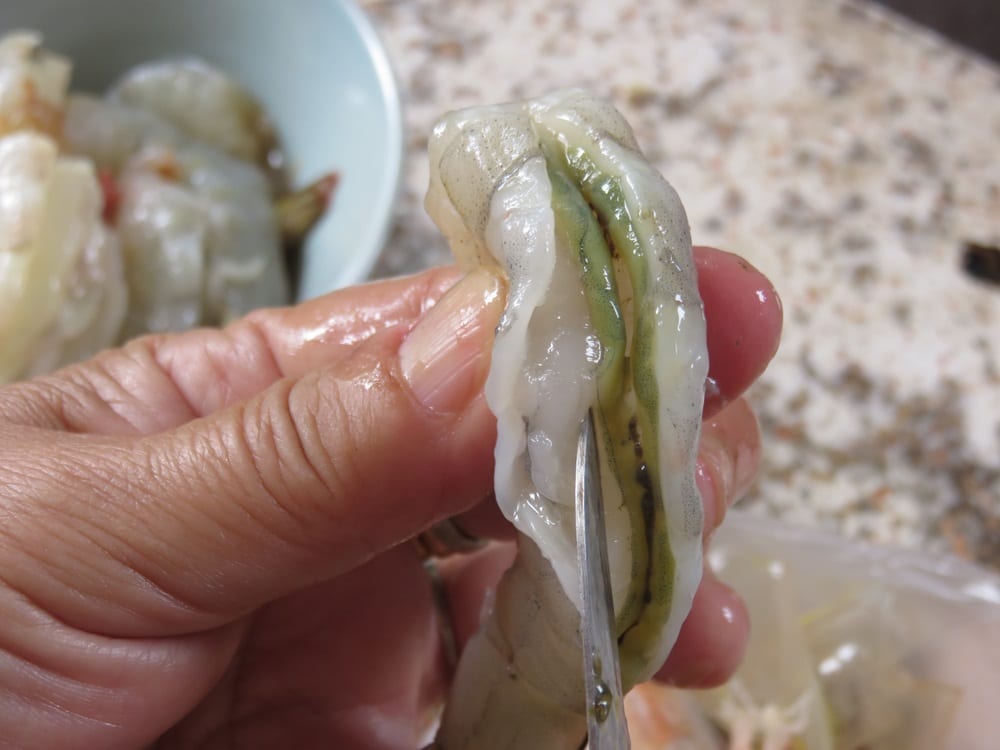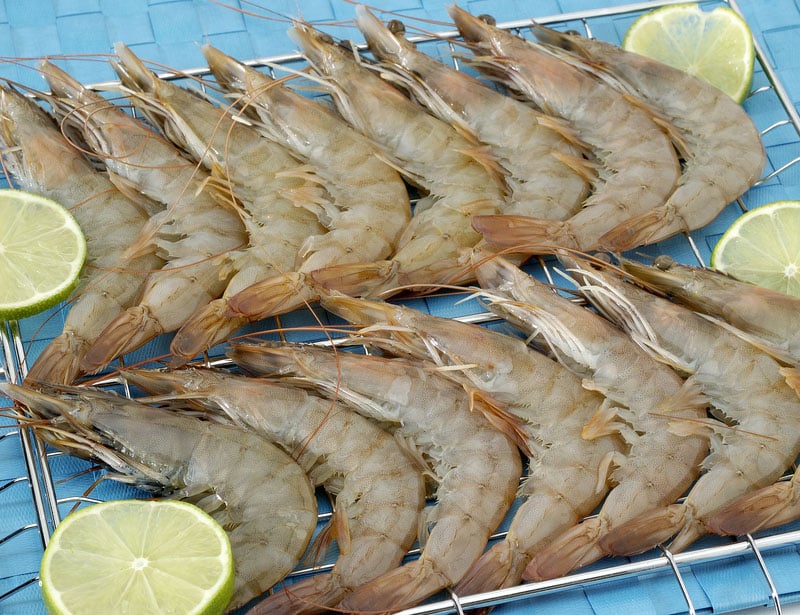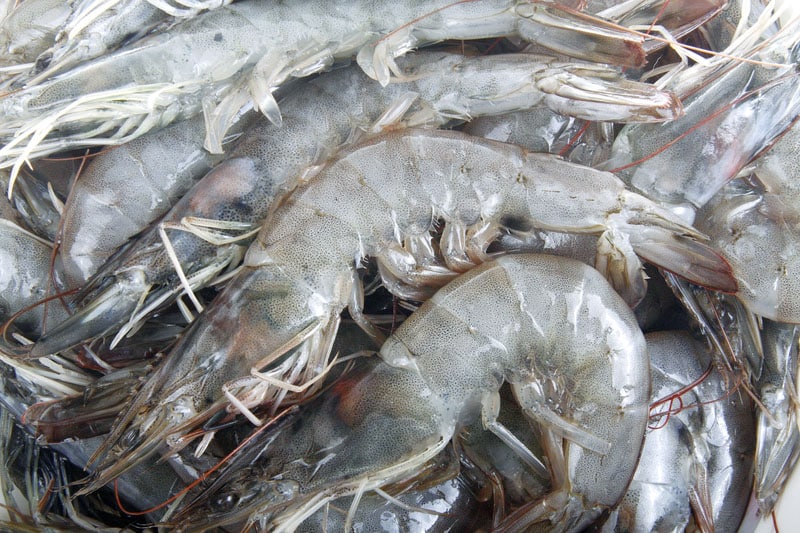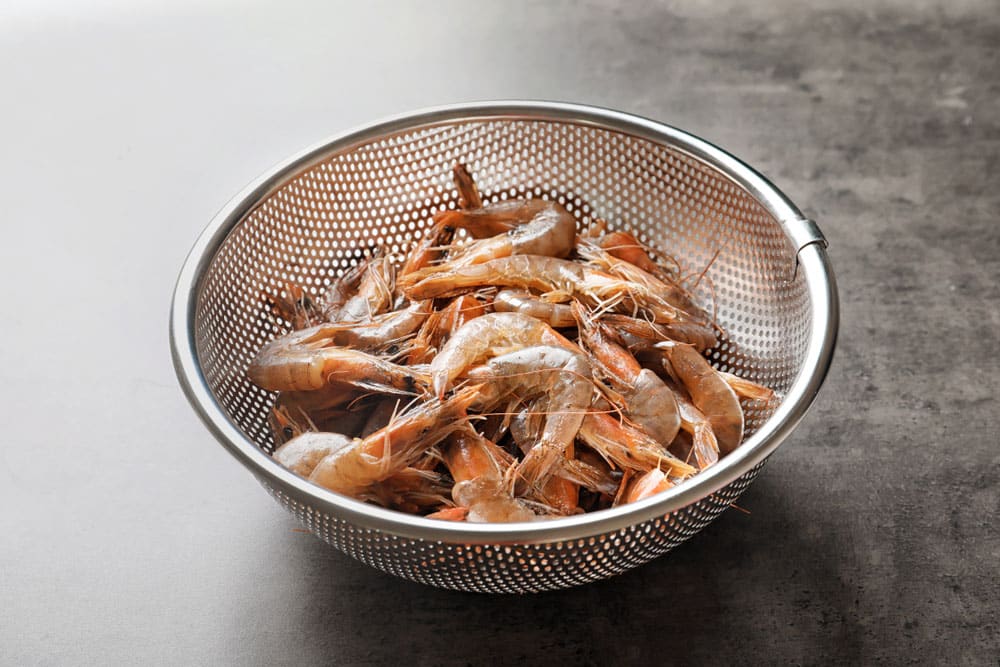
Shrimp is one of the most delicious and versatile additions to main courses, appetizers, and lunches. For this reason, many people purchase fresh shrimp to cook at home.
It’s worth remembering that proper cleaning, preparation, and cooking are essential because eating bad shrimp carries a risk of food poisoning.
Home cooks preparing and cooking shrimp often worry about the line of green stuff they see in the creatures and wonder what it is. Is the shrimp off? Is the green stuff safe to eat? What is it, even?
Today we’re here to tell you all about it so continue reading to find the answers.
What Is the Green Stuff in Shrimp?
If you look carefully at the shrimp you have purchased, you will notice a green line through the flesh down the shrimp’s back. It looks like a piece of string.
This is the shrimp’s digestive tract (sometimes referred to as the “poop shoot”) and is what people are often unsure about. It is usually green but may be black due to what the shrimp has eaten.
While this digestive tract is edible and will not do you any harm, it is not pleasant to look at or eat so most people remove it prior to cooking the shrimp.
Removing the string (deveining) is recommended as it will make your finished dish more appealing. Although the removal is called “deveining”, it is a digestive tract, not a vein.
Should You Devein the Shrimp or Not?
Deveining shrimp is normally done for aesthetic reasons and personal preference rather than hygiene. This is because the green digestive tract isn’t harmful to humans even if consumed.
If the digestive tract is visible through the shrimp’s meat and shell, and you find it unattractive, you can easily remove it. While most Western chefs remove it, restaurants in Japan leave the vein in.
The bigger shrimp are easier to devein as you can use a paring knife to create a slit along the shrimp’s backs then take out the digestive tract in one piece. (Use the knife’s tip to lift it out).
In the majority of cases, chefs don’t bother taking out the digestive tract from small and medium-sized shrimp unless they are too dirty. This is because the small shrimp are challenging to clean and devein.
If you don’t like the green tract, the easiest method by far is to simply purchase deveined shrimp from your local supermarket.
Signs of Bad Shrimp
Some people worry that this green digestive tract is a sign that the shrimp is off. It’s not but you do have to be careful to check for freshness when cleaning and preparing them.
There are some other signs of bad shrimp that you need to be aware of!
1. Smell
When it comes down to detecting bad shrimp, your sense of smell is the ultimate tool. Unspoiled, ocean-fresh shrimp tend to have a mild, salty aroma, or in some cases, there won’t be any smell at all.
On the other hand, if the shrimps have a fishy and strongly overwhelming aroma, you need to discard them. In addition, you need to be careful about any bleach or ammonia smells because these smells signal bacterial growth, which carries a risk of food poisoning.
2. Shell
The second sign you need to watch carefully will be on the shell. Fresh, raw shrimp should have firm, glossy, clean, and translucent shells. If there are black spots on the shrimps’ shells, they are natural and you don’t need to be worried.
According to the experts, the black spots are caused by improper processing and harvesting processes but they’re not harmful. You must, however, stay away from the shrimps if they have gritty, yellow, or slimy shells.
3. Consistency and color of the meat
Fresh shrimps will have translucent, firm meat but the color can range from light green to white, depending on the shrimp variety you choose. On the other hand, if the meat seems opaque, the shrimp could be spoiled.
In addition, the shrimp meat must be attached to the shell. If the body and shell aren’t connected, there is a high chance that the shrimp are bad.
As far as cooked shrimp are concerned, the meat should be white and firm with a slight flush of pink color on the exterior side.
4. Heads
It doesn’t matter if the shrimp are cooked or raw, headed shrimp are highly likely to have better flavor and texture compared to headless ones.
So, look at the head and if the eyes are moist and glossy, the shrimp are fresh. On the other hand, if the eyes are shrunken, dull, or missing, you shouldn’t consume them.
To Conclude
We hope this article has made it clear that the green stuff in shrimp is simply its digestive tract. It is not dangerous and may be consumed or not, as you wish.
We have also provided other ways for you to judge the freshness of shrimp for your safety.


